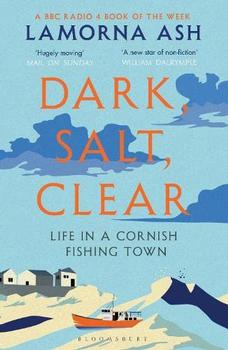Summary | Excerpt | Reviews | Beyond the book | Read-Alikes | Genres & Themes | Author Bio

When the rocker Billy Joel was once asked why he took up music, his succinct one-word answer was: girls. Members of the fairer sex were certainly not the motivator for the Swedish entomologist Fredrik Sjöberg to dive into his life passion: hoverflies. In fact, in his wonderfully whimsical memoir, The Fly Trap, he assures us that "no sensible person is interested in flies, or anyway no woman."
Sjöberg is now considered one of the world's foremost authorities on hoverflies and has collected 202 of the 368 species in his native Sweden, all from the tiny island (15 square kilometers) of Runmarö in the archipelago east of Stockholm, a place he calls home. For a while, before moving on to hoverflies, he dabbled in the theater arts, procuring props for elaborate staged productions but, he writes rather self-deprecatingly, "finally it became obvious that my talents lay with flies. That's a fate that takes some getting used to." It was a path that was kindled early on through a childhood where he was the only kid allowed to run free at night. "You can't send a moth-hunter to bed, no matter how young he is," Sjöberg reminds us, "and my parents were — still are — touchingly unsuspecting people who never even considered the possibility that their little boy did anything but catch moths under the nearest street lamp."
Hoverflies are a specific species that fall under Diptera – the order of flies. Sjöberg describes them as meek and mild creatures, easy to collect, appearing in many guises. "Sometimes they don't even look like flies," he explains. "Some of them look like hornets, others like honeybees, parasitic ichneumon wasps, gadflies, or fragile, thin-as-thread mosquitoes so tiny that normal people never even notice them." (See Beyond the Book.)
On one level, The Fly Trap is a compelling look at hoverflies and the field of entomology in general, debunking many myths about the profession. For example, Sjöberg tells us, an entomologist is not "a breathless twit rushing wildly across fields and meadows in pursuit of swiftly fleeing butterflies." Although the details about hoverflies are endlessly fascinating, what really elevates this book is Sjöberg's promise to have his memoir concentrate on his two-pronged mission: "to say something about the art and sometimes the bliss of limitation. And the legibility of landscape." The "bliss of limitation," of the singular and laser-like focus on something as innocuous as a hoverfly brings along its share of delights, and is a testament to perseverance and to the furthering of knowledge for its own sake. No, it does not get monotonous, Sjöberg assures us; lonely, maybe, but not monotonous.
The phrase "legibility of landscape" presents a more diffuse meaning, but The Fly Trap teases it apart meticulously. Sjöberg places his passion of collecting hoverflies against a larger backdrop — of summertime on the small island, of the need to experience nature just as one would take in art or music. The book makes extended forays exploring the life of another Swede, the great entomologist Rene Malaise, inventor of the Malaise trap that Sjöberg routinely uses. All throughout, Sjöberg's cheery and upbeat tone makes even his jabs easy to take. At one point for example, he pokes fun at environmentalists who are too keen on rooting out invasive species. "A little havoc, if only in the form of a garden, seldom does any harm," he writes. "It goes awry only when the scale gets too large." Sjöberg's keen eye and effervescent tone are infectious, you can't help but be carried along by his boundless enthusiasm for nature's many wonders. In many ways this memoir reads like Ray Bradbury's Dandelion Wine, like summer trapped within the pages of a warm and nourishing book.
It makes us glad that Sjöberg didn't turn to theater or rock to woo girls. Besides, as he joyfully found out, the path to at least one woman's heart was through hoverflies: Sjöberg has been happily married to his wife, Johanna, for many years.
![]() This review was originally published in The BookBrowse Review in July 2015, and has been updated for the
September 2016 edition.
Click here to go to this issue.
This review was originally published in The BookBrowse Review in July 2015, and has been updated for the
September 2016 edition.
Click here to go to this issue.

If you liked The Fly Trap, try these:

by Lamorna Ash
Published 2021
From an adventurous and discerning new voice reminiscent of Robert Macfarlane, a captivating portrait of a community eking out its living in a coastal landscape as stark and storied as it is beautiful.

by Emily Voigt
Published 2017
A riveting journey into the bizarre world of the Asian arowana or "dragon fish"—the world's most expensive aquarium fish—reveals a surprising history with profound implications for the future of wild animals and human beings alike.
Your guide toexceptional books
BookBrowse seeks out and recommends the best in contemporary fiction and nonfiction—books that not only engage and entertain but also deepen our understanding of ourselves and the world around us.